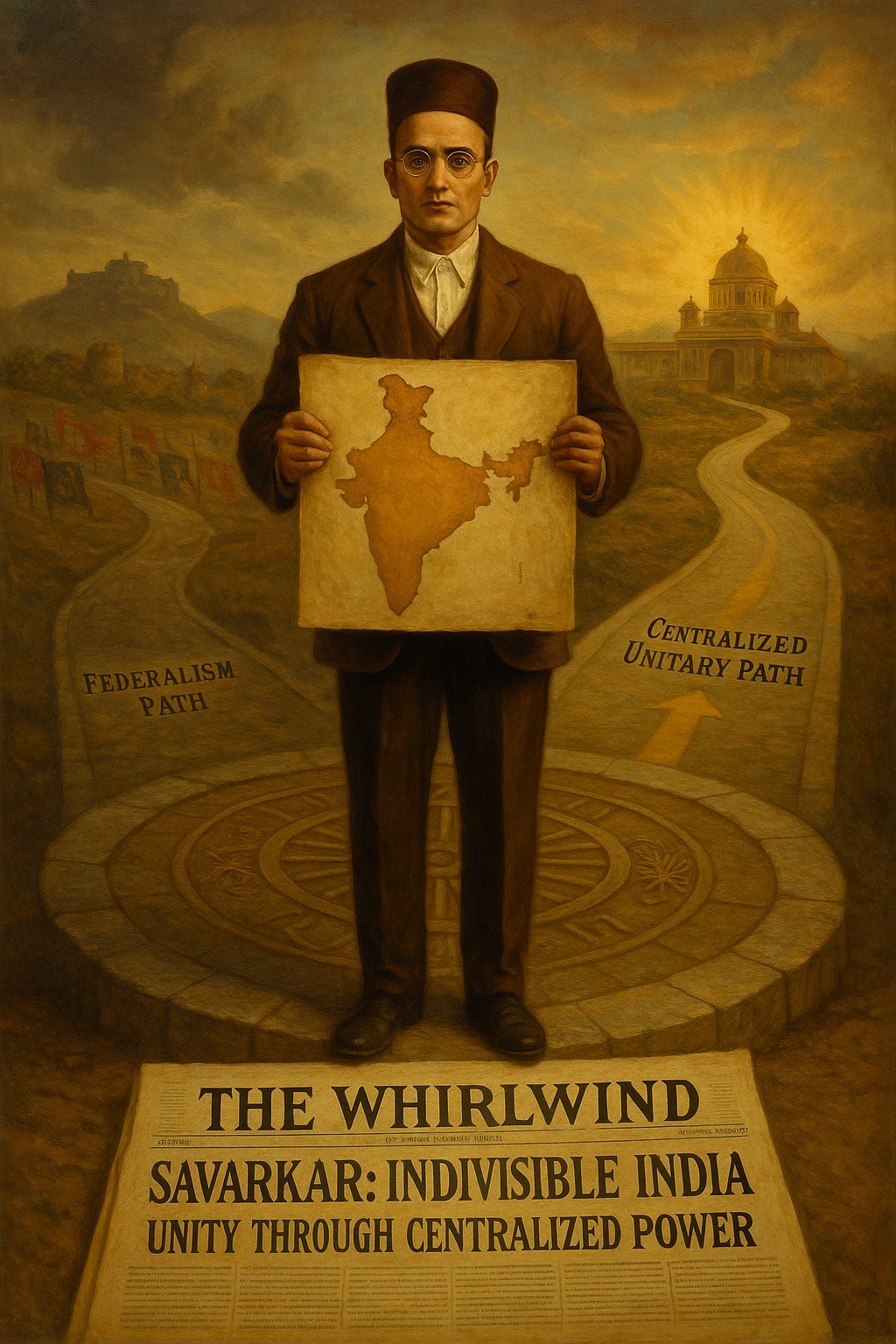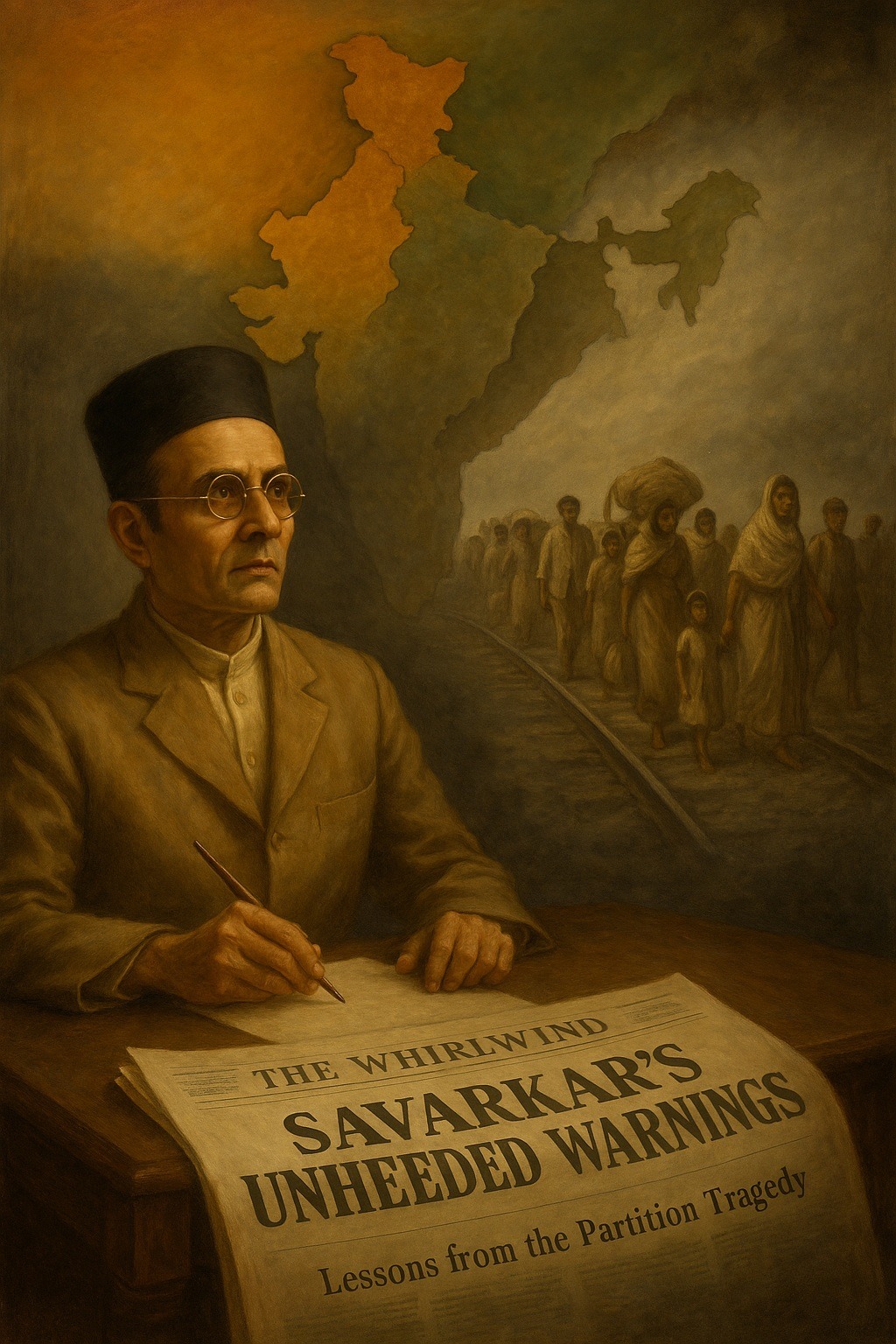Tag: Communalism
-
Political Dimension of Hindutva, Part 9 In Vinayak Damodar (Veer) Savarkar’s view, the challenge of preventing particularistic interests has been one of the most significant hurdles both in the struggle for independence and in shaping the post-colonial Indian state. Movements like the Andhra Movement or the alignment of Bengal’s independence struggle with regional interests highlight…
-
In the late 19th century, India was a country simmering with tensions—political, religious, and cultural. The British colonial regime‘s policy of divide and rule had deepened communal divisions. Against this backdrop, a teenage Vinayak Damodar (Veer) Savarkar, growing up in the village of Bhagur near Nashik, encountered one of the first defining moments of his…
-
Economic Dimension of Hindutva, Part 6; Savarkar’s Economic Principles (2/13) Vinayak Damodar (Veer) Savarkar was not just a political thinker and revolutionary; he was also a strong advocate for technological progress. At a time when Indian society was grappling with the impact of modernization, Savarkar made a passionate appeal to his compatriots to welcome the…
-
Independence Shadowed by Tragedy The Partition of India in 1947 was more than the birth of two nations — it was one of the largest human tragedies in recorded history. While millions celebrated independence, millions more faced death, displacement, and devastation. Few foresaw the coming storm as clearly as Vinayak Damodar (Veer) Savarkar. For years,…




